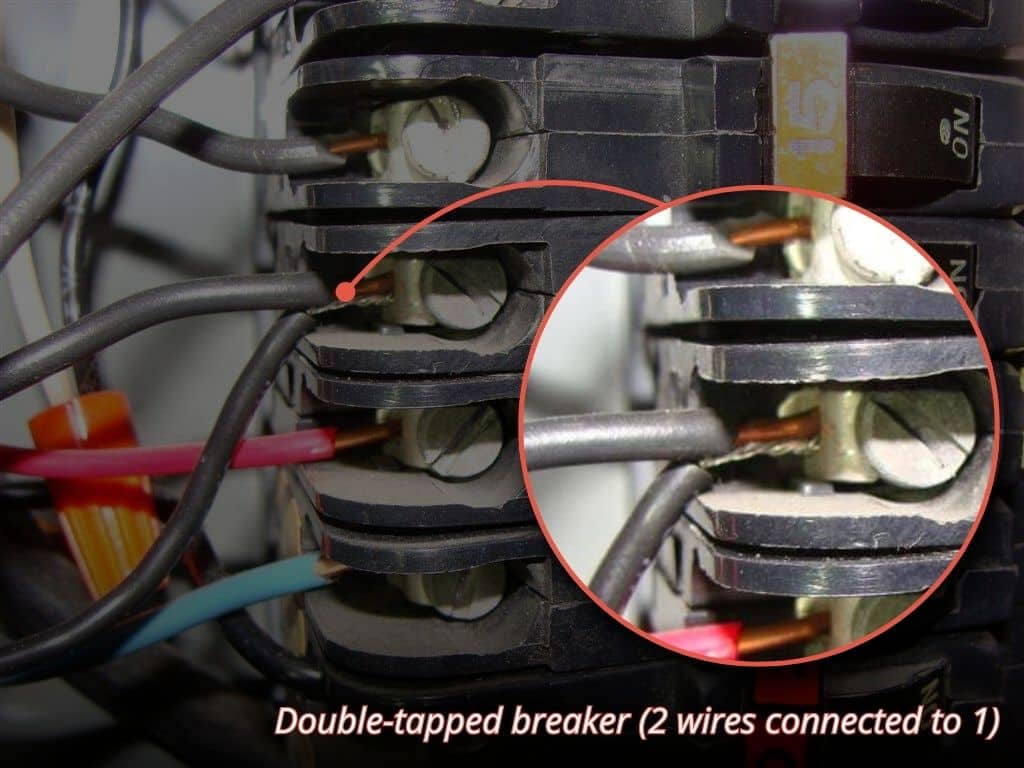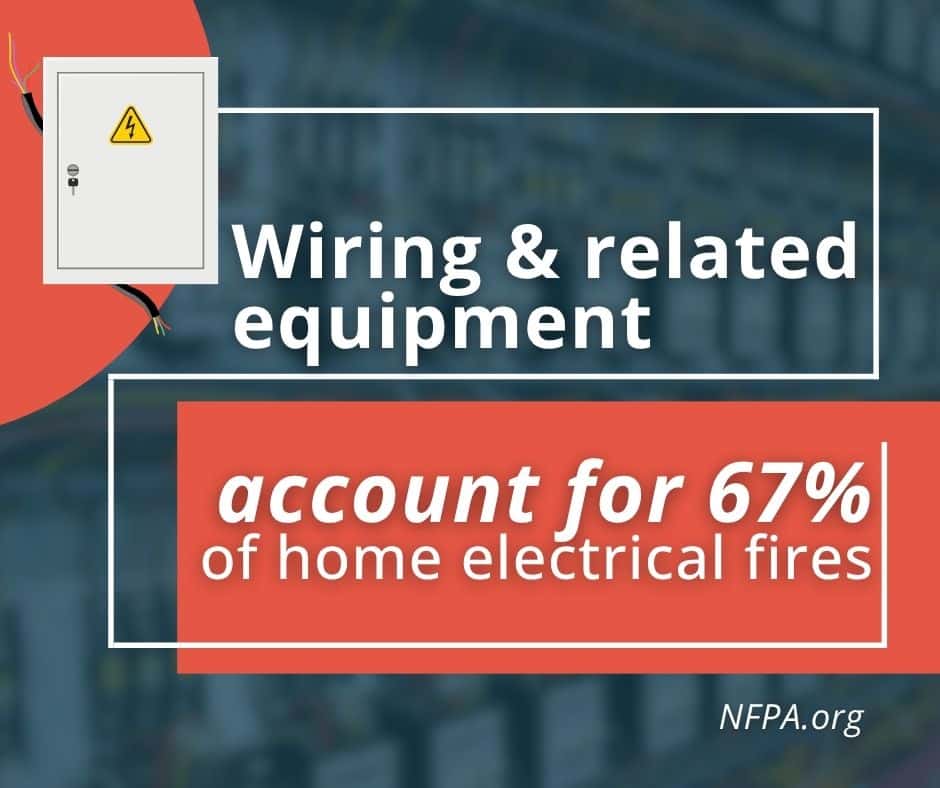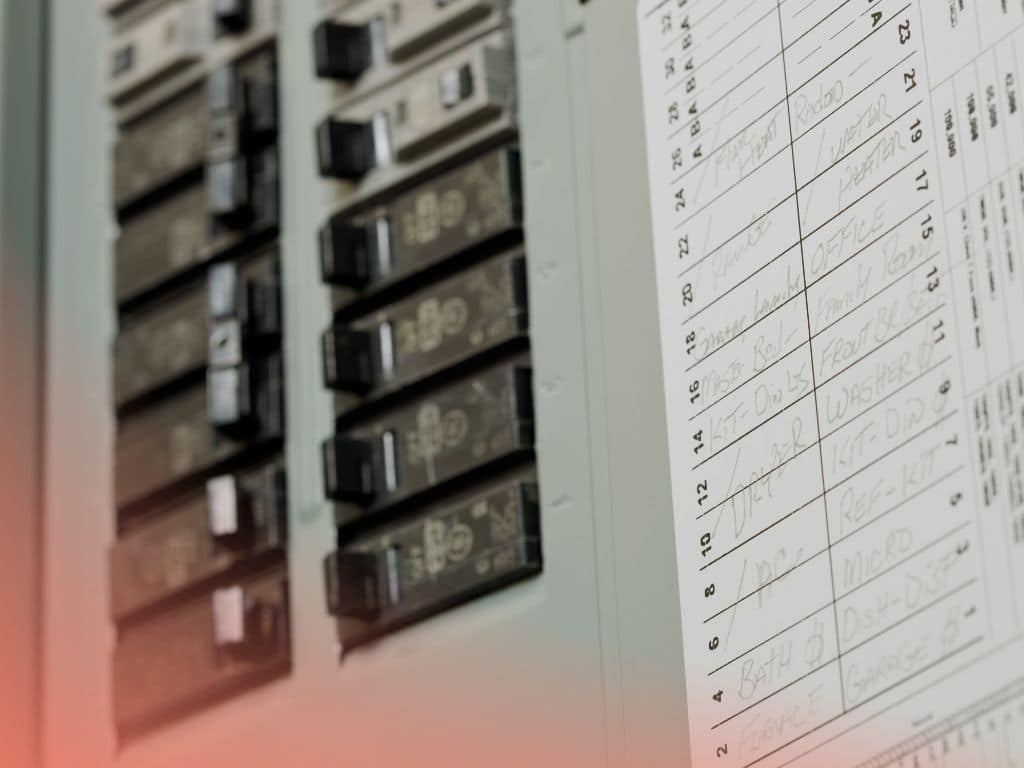Your electrical panel may not be something you check every day, but what’s going on inside it matters. One common issue found during home inspections is something called a double-tapped breaker. At first glance, it might not seem like a big deal. But under the surface, it can create fire hazards, circuit overloads, and future insurance problems if left unaddressed.
Whether you’re a homeowner, homebuyer, or just curious about your electrical system, here’s what you need to know about double-tapped breakers, how to spot them, and when they become dangerous.
Table of Contents
ToggleWhat Is a Double-Tapped Breaker?
A double-tapped breaker happens when two wires are connected to a single circuit breaker, even though that breaker is only designed to hold one wire.
Breakers are made to protect your home’s wiring by shutting off when too much electricity flows through a circuit. But when they’re used incorrectly, like in a double-tap, the connection may become loose, overheat, or fail to trip when needed.
Not all breakers are rated for two wires. Most standard residential panels are designed for one wire per terminal. If two wires are squeezed into a space meant for one, the connection may not hold securely, which increases the risk.
According to the International Association of Certified Home Inspectors (InterNACHI), double taps are among the most common electrical defects found during home inspections.
Why It Happens
Most of the time, double-tapped breakers aren’t the result of someone trying to cut corners. Instead, they’re often installed as a quick fix when someone adds a new circuit or appliance without upgrading the panel.
Common causes:
- Adding a water heater, pool pump, or outdoor outlet
- Installing a second air conditioning unit or appliance
- Performing DIY electrical work without a permit
- Using the wrong type of breaker or panel
Over time, as homes get more electronics and upgrades, panels can get overcrowded. That’s when shortcuts like double-tapping tend to show up.

Why Are They a Problem?
A double-tapped breaker can lead to multiple electrical hazards, even if nothing seems wrong at the moment.
1. Loose Connections
With two wires fighting for space in a terminal made for one, the connection can become loose over time. This increases resistance, which generates heat — a leading cause of electrical fires.
2. Overloaded Circuits
If both wires are powering devices that draw heavy current, the breaker may be overwhelmed. It might not trip when it should, or it might trip too often.
3. Uneven Wire Pressure
One wire may be clamped down more tightly than the other. This leads to arcing or small sparks between wires, which are hard to detect but extremely dangerous.
4. Failsafe Failure
The whole purpose of a breaker is to act as a safety switch. If it’s not working properly because of an incorrect setup, it can’t do its job.
The U.S. Fire Administration reports that electrical malfunctions are a top cause of house fires, accounting for over 24,000 residential fires per year in the U.S.
How to Tell if You Have a Double Tap
Most homeowners don’t notice a double-tapped breaker until a home inspection calls it out. You may not see or hear any problems until the situation becomes serious.
However, you can check for these visual signs:
- Two wires connected to a single breaker terminal
- Breaker switches that feel loose or unsteady
- Discoloration or scorch marks near the breaker
- Buzzing or crackling sounds from the panel
Always exercise caution when opening or inspecting your electrical panel. If you’re unsure or notice anything unusual, call a licensed electrician or schedule an inspection.

Are Double-Tapped Breakers Always Unsafe?
Some breakers are rated for two wires. These are called “twin” or “duplex” breakers, and they’re designed differently from standard single-pole breakers.
To tell the difference, you would need to check the breaker label or consult the panel’s manufacturer documentation. Just because two wires fit doesn’t mean the breaker is rated for it.
Unless you’re certain that the setup is approved and secure, it’s best to have it corrected.
How They’re Corrected
Fixing a double-tapped breaker is usually a straightforward job for a licensed electrician. Solutions include:
- Install a new breaker if there’s space in the panel
- Upgrade the panel to handle more circuits if it’s full
- Using a pigtail connection, which joins two wires to a short single wire that connects to the breaker correctly
- Replace the breaker with a model rated for two wires, if compatible with your panel
These repairs are often quick and inexpensive when caught early.
Related Homeowner Questions
Can a double-tapped breaker cause lights to flicker?
Yes. Loose connections can lead to inconsistent voltage, which might make lights dim, flicker, or buzz.
Will a home inspector flag a double tap?
Most likely. Any visible safety issue inside the electrical panel will be included in the inspection report and may need to be corrected before a home sale goes through.
Does insurance cover damage caused by faulty wiring?
Not always. If an electrical fire results from a known code violation or improper repair, insurance may deny the claim. Preventing the issue before it becomes a hazard is the safest route.
When to Call a Professional
If your home is older, your panel is crowded, or you’ve recently added new appliances, it’s worth getting your electrical panel inspected. Double-tapped breakers don’t always give warning signs, but they’re still a real safety concern.
At Tier-1 Pro Inspections, we perform detailed home inspections throughout Central Florida, including full checks of electrical panels. We document any unsafe wiring, outdated components, or common risks like double taps so you can make smart decisions before closing or repairs.
Conclusion
Double-tapped breakers may look like a small issue, but they can cause big problems. From loose wires to fire hazards, it’s never worth the risk.
If you’re buying a home, planning upgrades, or haven’t had your panel inspected in years, let Tier-1 Pro Inspections help. Our expert team will give you a clear, complete picture of your home’s safety and performance.

